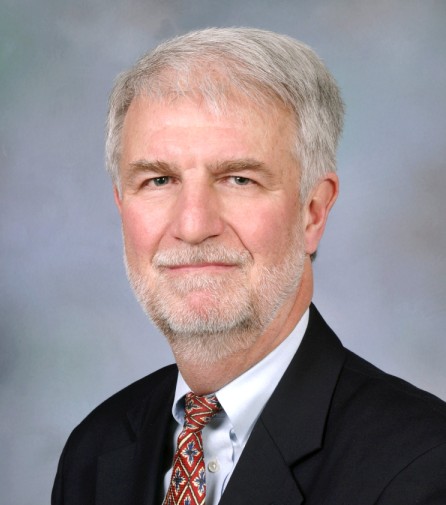Introduction
What is a copyright in the US? It is not only the copyright owner’s exclusive rights to control and exploit a copyrighted work through licensing and infringement actions, if necessary, but also a set of different, or maybe even conflicting, interests set forth in limitations and exceptions to copyright protection. In the US, to achieve a well-functioning copyright system, the rights of authors and copyright owners are often counter balanced with other societal interests, such as those of distribution entities and end-users. Although balance is not always achieved, a long-standing and strong school of thought feels that if equilibrium results among three groups — authors (owners), distributors of copyrighted works, and consumers — the public interest will be served. Copyright law also operates in a larger environment that includes respect for freedom of speech and enforcement of policies that promote competition.
 |
| Michael J.Remington |
For more than two centuries, US legislators, courts and administrative entities (like the Library of Congress and the Copyright Office) have devoted enormous efforts towards achieving a balanced system. Recently, when testifying about a growing need to update the US copyright law, Maria A. Pallante, Register of Copyrights, emphasized that Congress should keep “the public interest at the forefront,” “look to the equities of the Copyright Act as a whole, and strive for balance in the overall framework.” In Pallante’s view, an effective copyright law can and should achieve a balance that “combines safeguards for free expression, guarantees of due process, mechanisms of access, and respect for intellectual property.”
The constitutional basis for US copyright protection
In the US, every federal law must have a firm foundation rooted in the US Constitution. Federal copyright protection derives from the Constitution’s Patent and Copyright Clause, Article I, Section 8, Clause 8, which authorizes the US Congress “to promote the Progress of Science and useful Arts, by securing for limited Times to Authors and Inventors the exclusive Right to their respective Writings and Discoveries…” The Constitution does not establish copyrights. It simply provides Congress with the authority to grant such rights as it deems appropriate and as long as the provisions in Clause 8 are respected.
The Clause functions as a double-sided coin. On one side, it gives Congress the power to establish a system that grants a copyright owner a bundle of exclusive rights, somewhat analogous to real property rights, to incentivize and reward the creation of “writings.” On the other side, this bundle of rights is more limited than real property rights. The US Supreme Court once said, “the monopoly privileges that Congress may authorize are neither unlimited nor primarily designed to provide a special private benefit.” Sony Corp. of Am. v. Universal City Studios, Inc., 464 U.S. 417, 429 (1984). More importantly, as noted by Congress itself in two historic revisions of copyright law — in 1909 and 1976 — the enactment of copyright legislation is not based on any natural right that an author has in his writings but upon the grounds that the welfare of the public will be served through the progress of science and useful arts. The US Supreme Court made it clear that “the immediate effect of our copyright law is to secure a fair return for an ‘author’s’ creative labor. But the ultimate aim is, through this incentive, to stimulate artistic creativity for the general public good.” Twentieth Century Music Corp. v. Aiken , 422 U.S. 151, 156 (1975). Theoretically, the public benefits twice from a copyrighted work: when the work is created and made available and when it goes in to the public domain due to the expiration of its copyright term. Simply stated, copyright is a limited statutory grant designed to stimulate good for the public, although its direct beneficiaries are authors and copyright owners.
The Framers of the US Constitution assigned to the US Congress, the most politically representative of the three branches of the government, the role of defining the scope of the limited monopolies granted to authors and owners in exchange for public access to their works. By conferring authority on elected officials, the Framers therefore envisioned a political assessment and weighing of equities between the proprietary rights of creators and the public good. Congress struck a balance in 1790 when it enacted the first American copyright law. In the meantime, as changes occurred and new technologies were developed, Congress periodically adjusted the copyright law, with varying degrees of success to respect proprietary and public interests.
The Constitution also provides for a judicial branch of government.See Article III. The founding fathers contemplated a common law system similar to that of the United Kingdom in comparison to the civil law systems of continental Europe, permitting American judges to play a significant role in interpreting and enforcing statutory enactments. Pursuant to an historic Supreme Court decision—Marbury v. Madison, 5 U.S. (Cranch 1) 137 (1803)—the federal courts were found to have authority to declare congressional enactments unconstitutional. This power serves as a check on legislative failure to respect constitutional boundaries. Furthermore, when judges interpret the language of statutes, the function of the courts is “…to construe the language so as to give effect to the intent of Congress.” United States v. American Trucking Assoc., Inc., 310 U.S. 534, 542 (1940). For foreign observers, it may appear at first glance that the judiciary does not play a lead role in the development and evolution of US copyright law. This view is mistaken; the judiciary’s role is central.
 |
| Kexin Li |
The three-legged stool: achieving balance between three groups in the digital environment
The congressional architect of the 1976 Copyright Revision Act and the Berne Convention Implementation Act, Representative Robert W. Kastenmeier (D—Wisconsin) often talked about the triumvi r a t e of copyright players: authors, distributors (including publishers), and users (including libraries which promote users’ interests). He warned that a certain equilibrium was necessary to maintain the balance of a three-legged stool. If the rights, privileges and interests of the three groups are kept in mind, according to Kastenmeier, the requisite balance promised in the constitutional grant of authority to Congress and elected officials to promote the progress of science and the useful arts could be accomplished. If one leg is dramatically shortened, then the stool will tip or fall. The three-legged stool approach is a departure from the traditional, European view of copyright as being binary between authors and users (be they distributors or consumers). Today, continental Europeans complain about their binary world becoming more like the American one. And, at the same time, American copyright law inexorably is becoming more statutory (like civil law countries).
Even before the digital era, the creative and personal use (one leg) of copyrighted works came into conflict with the wishes of distribution interests (another leg) to control commercial use or to receive transmission rights at low costs. For example, a historian would feel free to quote others liberally but would not want to be quoted extensively without compensation. In the post-digital era, members of the three groups frequently change positions. Users become authors, and vice versa. Both may become distributors of their own works or the works of others peer-to-peer merely by turning on their computers.
To further complicate matters, the growth of distribution interests in the information society has been phenomenal. In the US, the seminal Copyright Revision Act of 1976 Act was held up for resolution of issues related to cable television, but who could have predicted and resolved satellite carriage (distant and local-to-local), interactive web-casting, streaming, the entry of local and long distance telephone carriers, wireless and broadband. Printers, photofinishers, on-line service providers, web-casters, and others fall in the zone between copyright owners and consumers. Copyright owners themselves, like motion picture companies, publishers and the major record labels, are not ready to cede distribution to others. But, on the Internet space, almost anyone can be a distributor.
Despite these dramatic changes, the user’s position — to have access to a wide variety of materials at the lowest possible price — has remained fairly consistent. So has that of the author, who responds to economic incentives and wants to be rewarded for creativity through either sales of copyrighted works or licensing, thereby creating a continuing flow of income. The development of a vibrant, competitive, and sometimes destructive distribution zone has made the three-legged stool very unsteady. All the while, the economic implications of the copyright industries are expanding wildly in a global environment.


